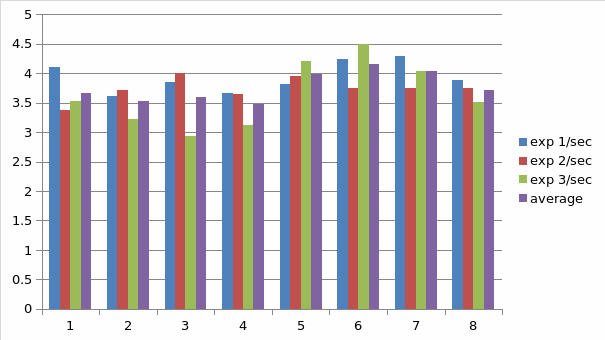This paper is a report of a paper helicopter experiment that was carried out in a group. The experiment involved designating a paper helicopter in varied designs and then dropping it severally while recording the flight time. The report starts by explaining the essence of having one person drop the helicopter and the other one record the outcome. A different part explains the reasons for dropping the helicopter three times rather than once. The results of the experiments have been analyzed graphically, after which, the observable effects of design variation have been made clear. Finally, the report has underscored different factors that obstructed the group experiment and the effects on the outcome.
The response variable in this experiment is the Helicopter flight time. This variable is dependent on the explanatory variables such as wing length, body length and body width. This means that flight time is determined by factors such as wing length, body length and body width (Fisher, 1935). The essence of having one person drop the helicopter and the other one-timing the outcome of each group is to increase the accuracy of a recording. Furthermore, if the same person who drops engages in recording, a lot of inaccuracy could result from delays and lack of concentration. In addition, if the person who is throwing concentrates precisely on that role, chances of uneven output energy could be eliminated hence boosting accuracy. Different people being engaged in dropping would definitely increase bias and inaccuracy; as they are not likely to use the same level of energy and positioning while throwing the helicopter (Fisher, 1935). The essence of dropping the helicopter three times rather than once is to reduce error. Different droppings are involved in bias as a result of factors such as dropping energy and environmental factors such as wind-which causes undue variations. Undertaking three droppings and perhaps settling on the average reduces the effects of such factors (Fisher, 1935).

From the data, it is evident that some specific helicopter design significantly influences the helicopter flight time. For example, an elongated wing or body length makes the helicopter spend more time in the air. In addition, reduced body width increases the flight time. This is particularly the reason why the helicopter design that was dropped in sample 6 produced the best average flight time, as it had the most extended wing and body length as well as the least body width. Sample 7 was the second-best as it had a design closely similar to that of sample six, only that the body width was more by 2 centimetres. Nonetheless, all the factors levels seemed to have the same magnitude of influence (Box, Hunter, Hunter, 1978). Three were a number of factors that obstructed our group experiment. First, the weather kept on varying from time to time. While at times it was warm and dry, other times it was cold and windy. This greatly affected the results of our experiment. In particular, the wind increased the flight time hence leading to biased records. Second, there were some instances when dropping was obstructed by objects. For example, the helicopter could hit on the wall hence interfering with its dropping velocity. Such scenarios significantly introduced bias and error into our experiment as increased fight time as a result of hitting an object was not a predetermined variable (Bigaard, 1988).
References
Bigaard, S., A., 1988. A Practical Aid for Experimenters. Madison: Starlight Press.
Box, G.E.P., Hunter, W.G., &Hunter. J.S., 1978. Statistics for Experiments. New York: John Wiley.
Fisher, R.A., 1935. The Design for Experimenters. Edinburgh and London.